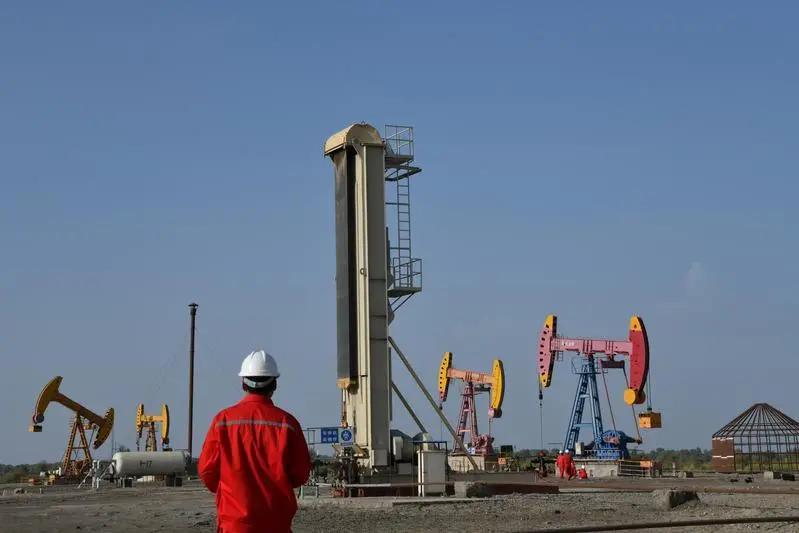PHOTO
(The opinions expressed here are those of the author, a columnist for Reuters.)
LAUNCESTON: The cat and mouse game between Asia's two biggest oil importers and the major exporters to the region ratcheted up another notch with China's announcement it will sell crude from its strategic reserves.
Both China, the world's biggest crude importer, and India, the second-biggest in Asia, now have plans to sell crude from strategic petroleum reserves (SPRs), in a not-so-subtle message that they believe the oil price has risen far enough.
However, Asia's two heavyweight importers are running the risk that the major producers in the OPEC+ group of exporters will retaliate, by changing the amount by which they have agreed to raise output.
Benchmark Brent futures LCOc1 have surged 41.5% since the end of last year, and were trading around $73.30 a barrel in early Asian trade on Monday.
They have rallied since a recent low of $64.60 on Aug. 23, and these gains may have prompted the Chinese announcement of auctions from the SPR.
There is also some confusion as to what exactly the Chinese government is planning with the auction from the SPR, given that the Sept. 10 announcement lacked details, and wasn't even clear on whether the sale is upcoming, or has already taken place.
But even without the exact details on how much crude will be - or already has been - sold, and at what price, the accompanying message was crystal clear.
The National Food and Strategic Reserves Administration, which manages the SPR, said the auctions will take place in phases and are intended for integrated refining and chemical plants.
The sales will "better stabilise domestic market supply and demand, and effectively guarantee the country's energy security," the agency said, adding that it plans to regularly release and replenish China's oil reserves.
In other words, China is now confirming what the market has long suspected, that the SPR, and commercial crude inventories, are being used to ensure that oil prices don't rally to levels that Beijing deems too high.
This has been in evidence for much of the past year, as China appears to have dipped into inventories on a regular basis, using up some of the cheap oil it gorged on last year when the Brent price dropped to two decade lows amid the global coronavirus pandemic and a brief price war between top exporters Saudi Arabia and Russia.
Chinese refiners have most likely drawn on inventories in six of the 10 months from October to July, including three consecutive months from May to July.
The country doesn't disclose the volumes of crude flowing into strategic and commercial stockpiles. But an estimate can be made by deducting the total amount of crude available from imports and domestic output from the amount of crude processed.
Calculations based on this method showed a draw of about 223,700 barrels per day (bpd) in July, which was lower than the 980,000 bpd in June and the 589,000 bpd in May.
The question for the market is whether last week's official announcement is a marked change from what appears to have already been happening.
USING STOCKPILES
It's possible that the inventory draws that have occurred since October last year were mainly refiners using up excess commercial inventories, and this process is now largely exhausted.
In this case it may be that Beijing wants to continue to keep imports of crude at levels that don't add a bullish factor to prices, and has therefore decided to release oil from the SPR to dampen potential import growth.
Crude imports for the first eight months of 2021 were the equivalent of 10.4 million bpd, down 5.7% from the same period last year, according to official data.
India has also announced that its SPR will be more active in the market, although its relatively small size compared to China's means any impact may be more muted.
India has started selling oil from its SPR to state-run refiners as part of efforts to commercialise the storage, Reuters reported on Aug. 17, citing three sources familiar with the matter.
Exact details of the extent of the sales aren't available, but Reuters reported 5.5 million barrels is in the process of being sold, while Indian newspaper Mint reported on Sept. 12 that a total of 4.3 million barrels will be sold to two refiners by December.
These volumes are relatively small, being little more than one's day demand for India, but similar to China's SPR sales, it may be more about the message to producers to ensure export volumes are high enough to keep prices from rallying further.
(Editing by Richard Pullin) ((clyde.russell@thomsonreuters.com)(+61 437 622 448)(Reuters Messaging: clyde.russell.thomsonreuters.com@reuters.net))












